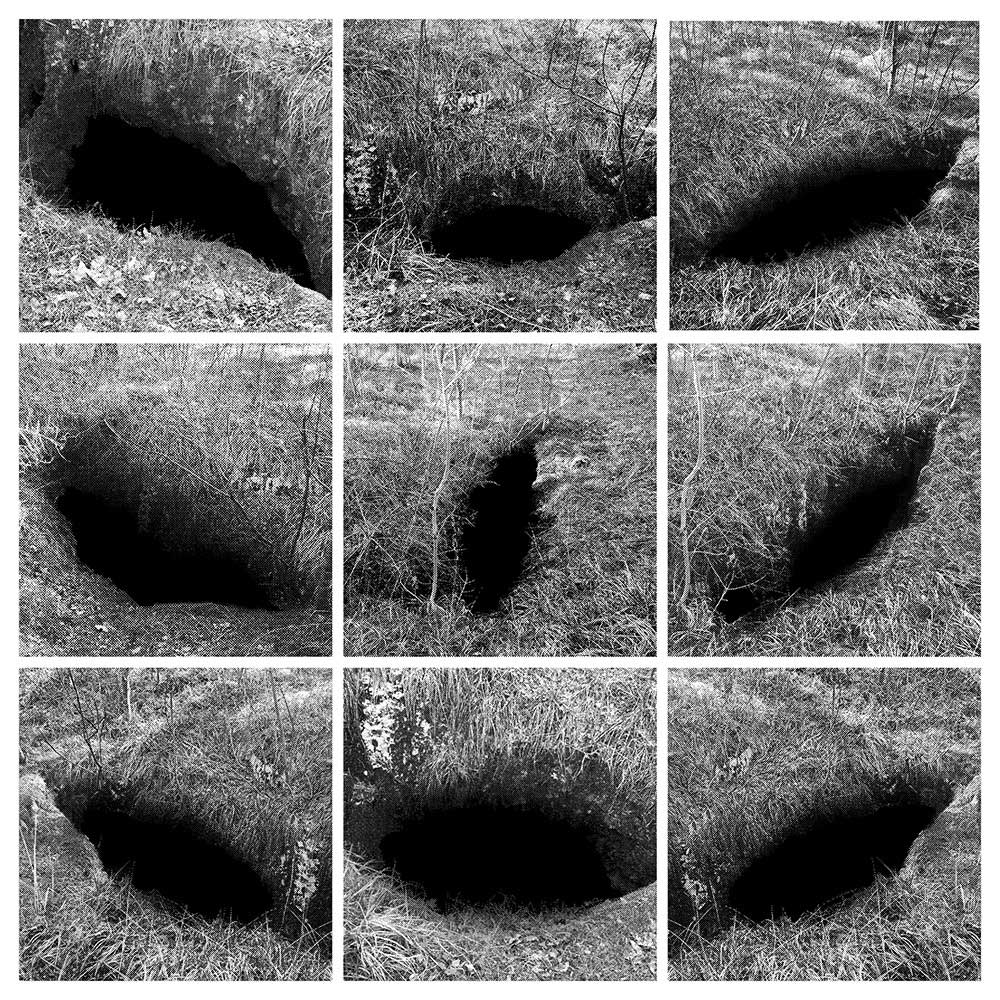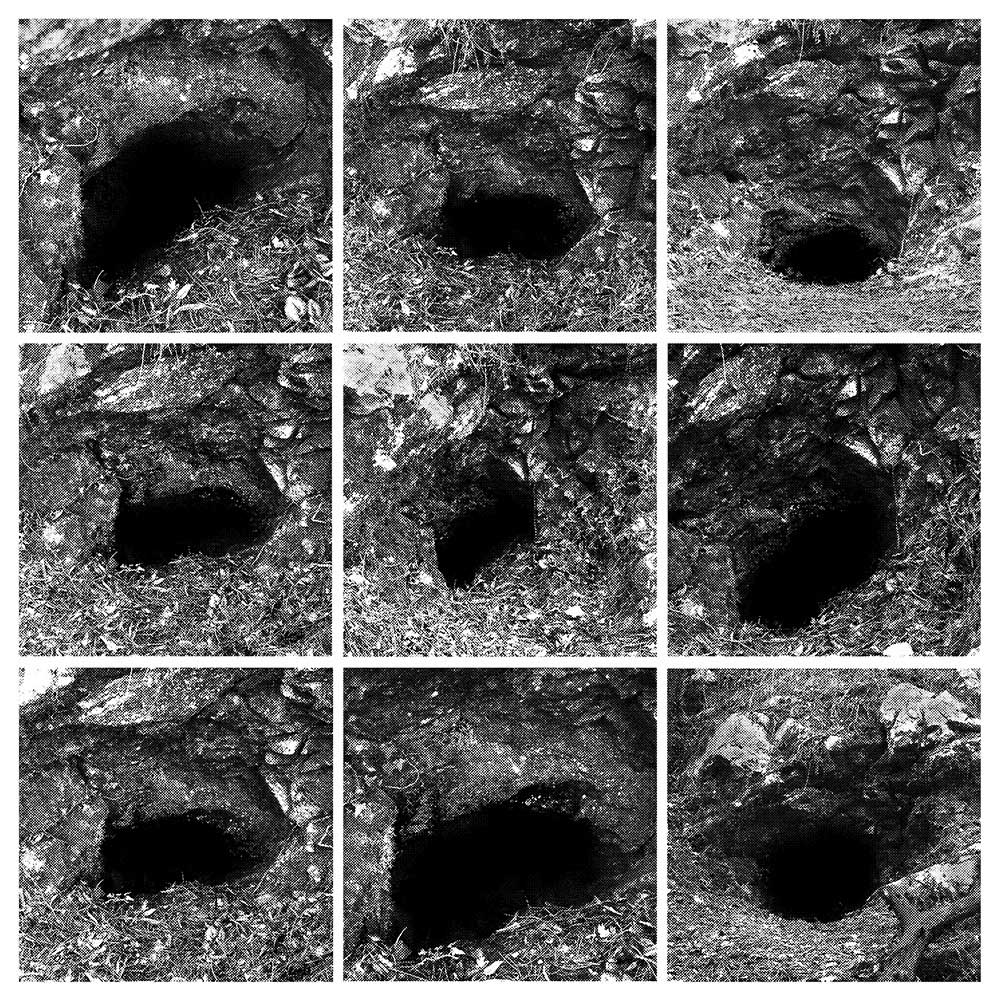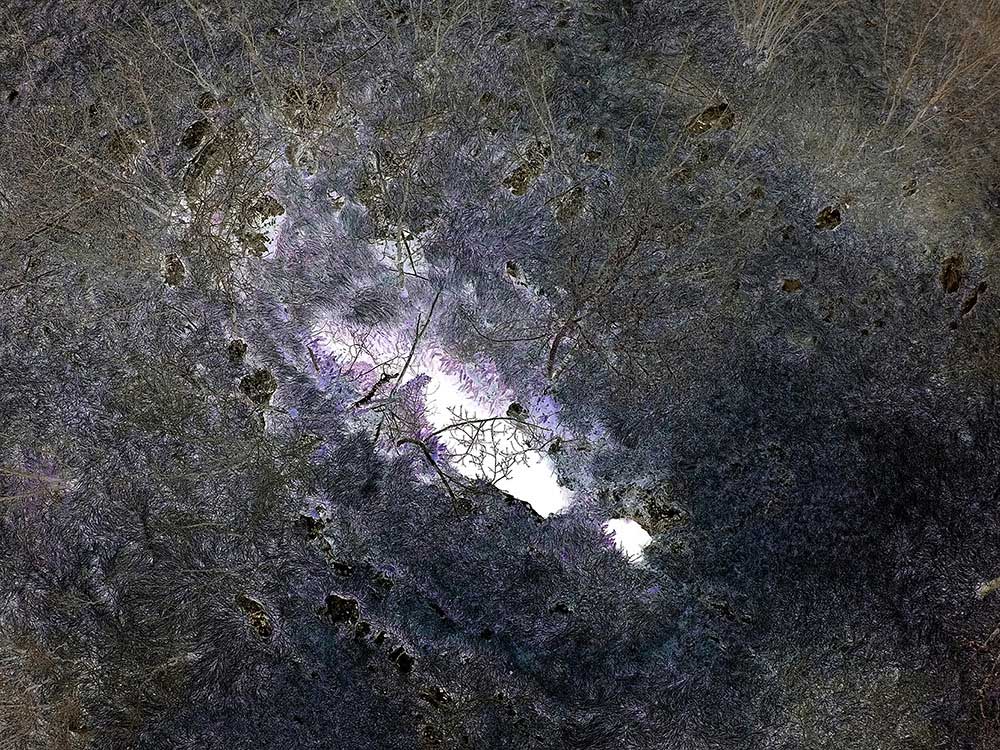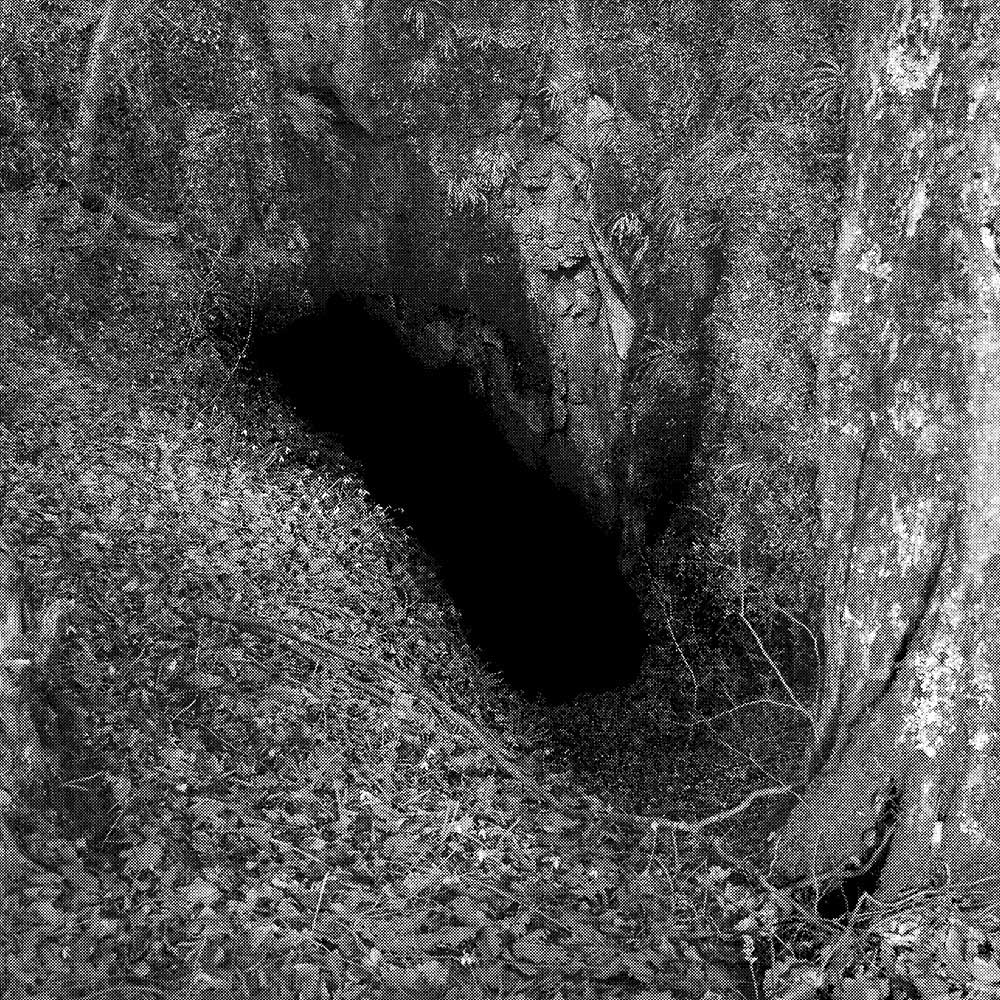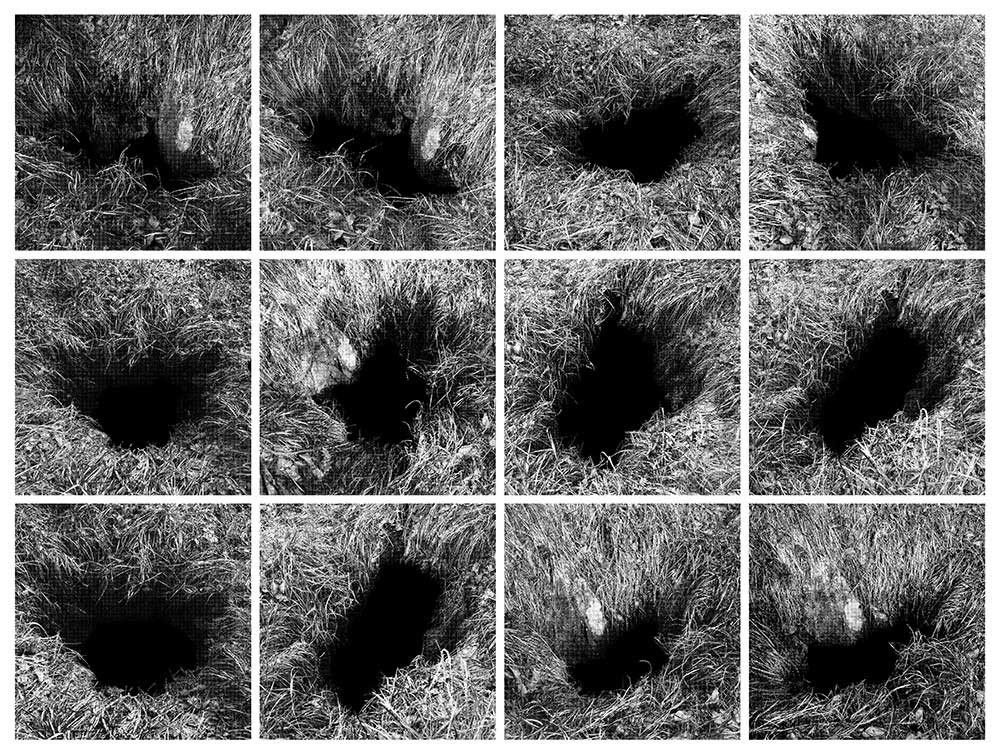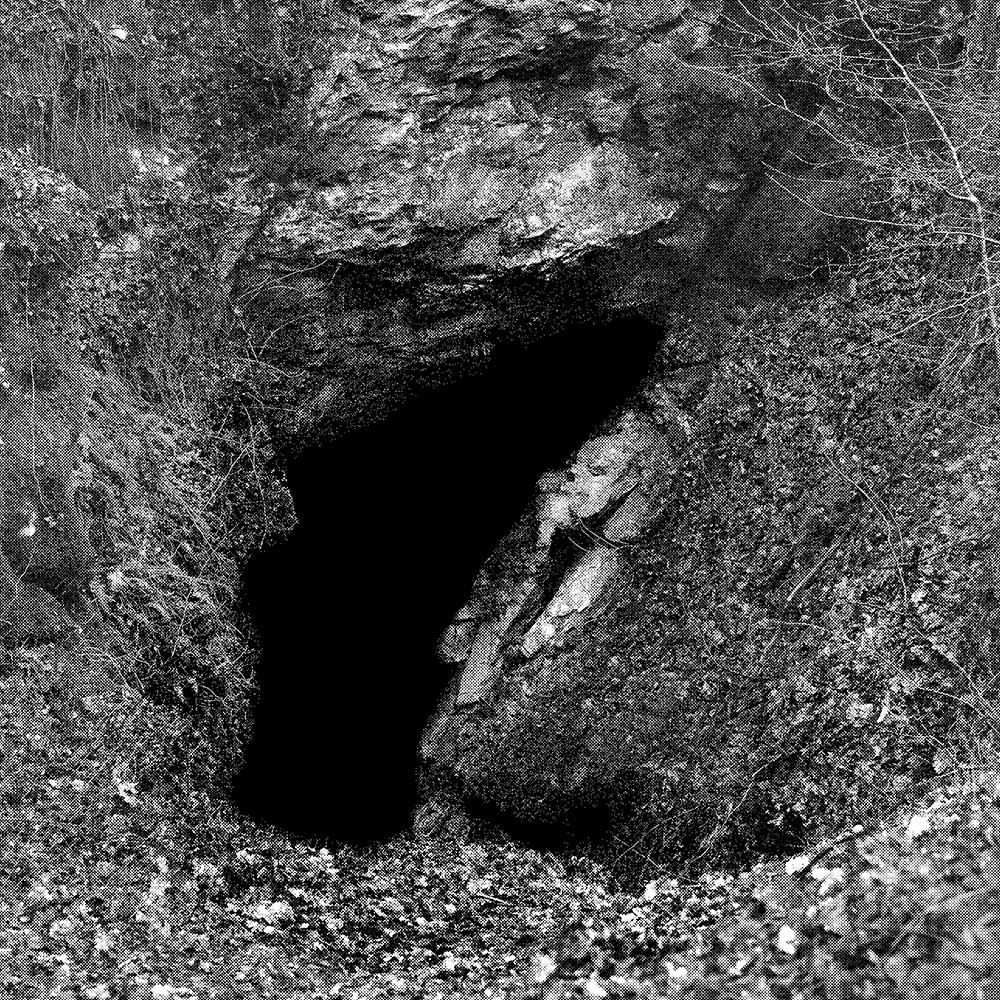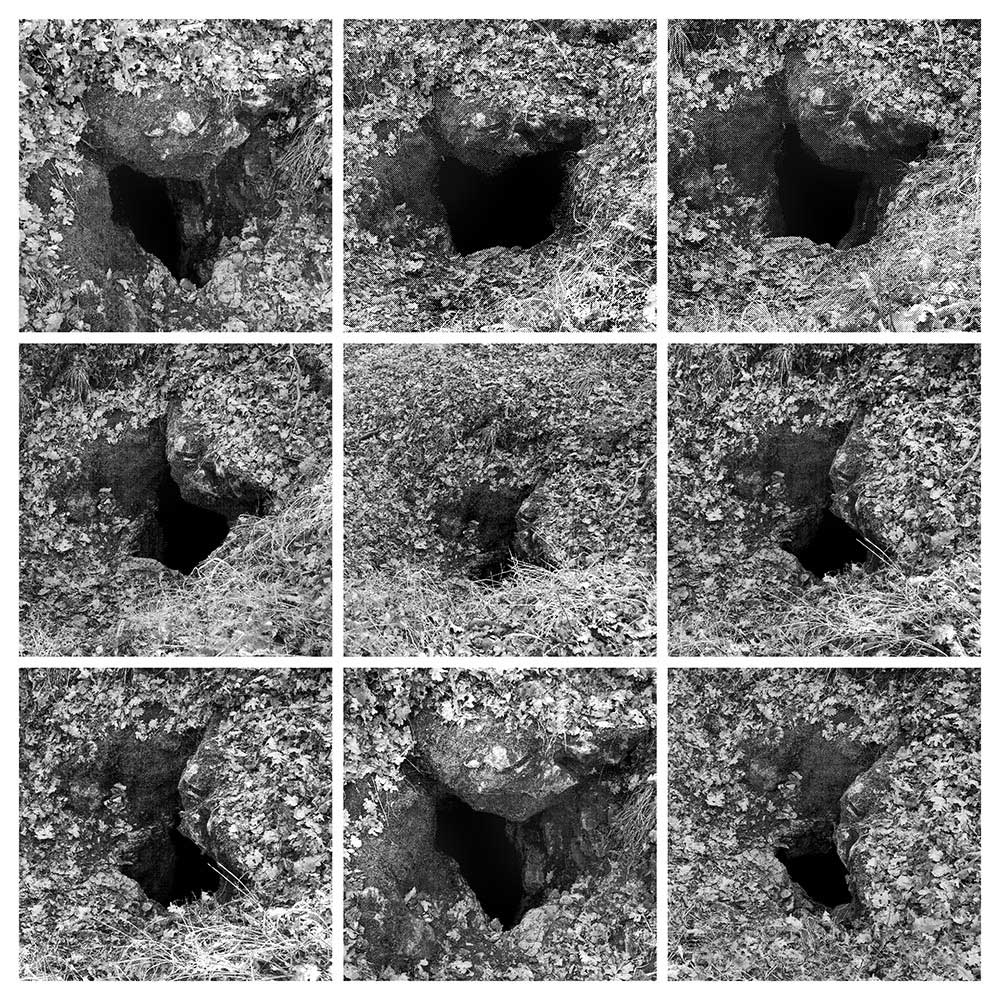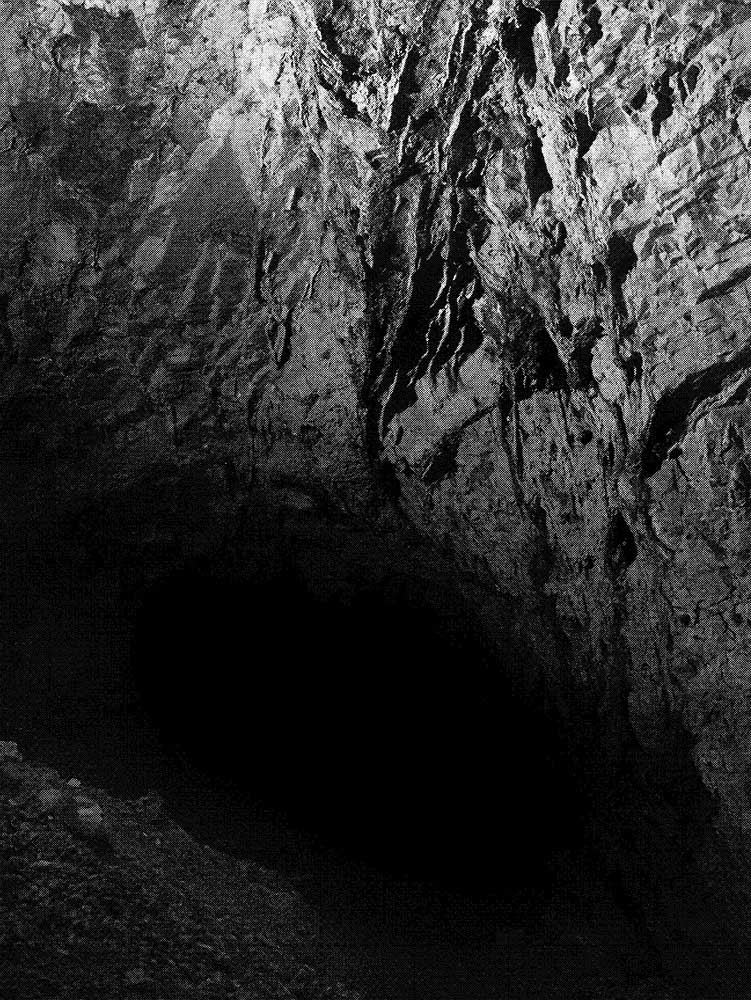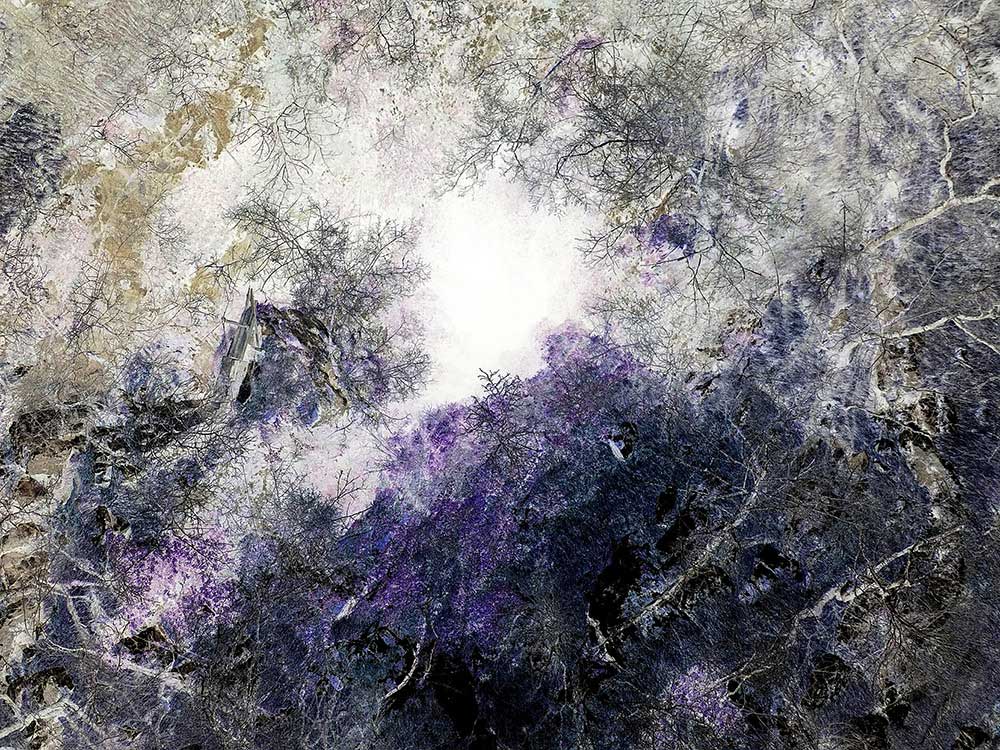Foiba, Italian term for “sinkhole” is a Deep natural cave with a funnel shape, typical of the Carso region.
In Istria, Dalmatia and Venezia Giulia these cavities were used as mass graves to hide the bodies of the victims of political killings by Yugoslav partisans after the Second World War. Even today, the history of these depths remains unclear, contested and often denied, and the sinkholes continue to conceal secrets. The obsession and repetition on the grid of the sinkholes from multiple points of view is a desperate search for the truth.
Some pictures were taken with a drone, others screen printed with a type of filter that recalls the printing of newspapers. Rather than attract, the images abstract their
primary meaning from the foibe.On one hand the eye is attracted to the hole, on the other one the eye is distanced and put in a neutral state by the halftone and the inverted colours. The photographs show, they do not demonstrate. They show what, for decades, nobody wanted to see in Italy and all the countries involved. Today only, after many years, Italy is dedicating a memorial day for the victims and for the history of Istria, Dalmatia.
Foibe is a photographic investigation aimed at reflecting on the extent that the geological conformation of a region can affect its historical and social developments. It’s an attempt to bring viewer into contact with the territory, highlighting that the foibe are first of all a natural phenomenon peculiar to a specific area.
About Sharon Ritossa
Sharon Ritossa is an italian photographer of Istrian origin. She graduated in Letters and Philosophy in Rome, she specialized in Photography at the ISIA in Urbino, with a research thesis on the Istrian exodus. She is achieving a scholarship in Fabrica, the communication research centre of Benetton group.
